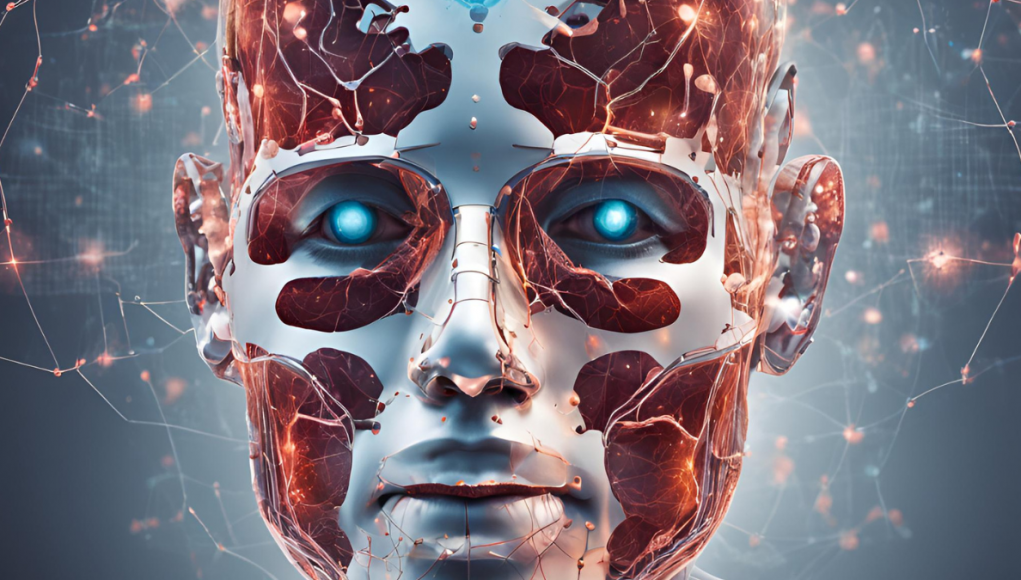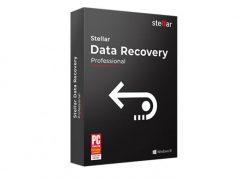Artificial intelligence (AI) has made a significant impact on various industries, with healthcare being one of the most prominent. AI-powered tools are rapidly becoming indispensable for disease detection and prediction, transforming the way doctors diagnose conditions and improving patient outcomes. These advanced technologies can analyze large amounts of data with exceptional speed and accuracy, allowing for earlier detection of diseases, personalized treatment plans, and a reduction in human error. In this article, we will explore some of the top AI solutions for disease prediction and discuss how they are revolutionizing healthcare.
The Importance of AI in Disease Detection
The integration of AI in disease detection offers numerous benefits to healthcare providers and patients. By leveraging machine learning algorithms, natural language processing, and neural networks, Top AI Solutions for Disease Prediction can analyze medical images, genomic data, and patient records with incredible accuracy. This leads to faster diagnoses, more personalized treatments, and overall better patient care. Top AI Solutions for Disease Prediction also help to streamline workflows, allowing healthcare professionals to focus on complex decision-making while reducing the administrative burden. These technologies are now popular across a wide range of medical fields, including oncology, cardiology, radiology, and pathology.
Top AI Solutions for Disease Prediction
1. IBM Watson Health
Overview:
IBM Watson Health is one of the most well-known Top AI Solutions for Disease Prediction in the healthcare space. It combines cognitive computing, natural language processing (NLP), and machine learning to assist healthcare professionals in disease detection and treatment planning, particularly in oncology and radiology.
Features:
The platform can process vast amounts of structured and unstructured data from medical records, research papers, clinical trials, and more. It employs machine learning to identify patterns in data that can predict disease progression and suggest personalized treatment options. NLP allows the system to understand and analyze complex medical language, providing more context and depth to diagnoses.
Uses:
IBM Watson Health has been particularly influential in cancer diagnostics, where it helps oncologists develop treatment plans by analyzing genetic data, patient history, and the latest medical research. It’s also popular in radiology to interpret imaging studies such as MRIs and CT scans, providing insights that help radiologists identify abnormalities more accurately.
Pros:
The platform’s ability to integrate data from multiple sources, including genomics, clinical trials, and patient records, makes it a powerful tool for personalized medicine. Its collaborations with major research institutions and hospitals enhance its diagnostic capabilities.
Cons:
One downside of IBM Watson Health is its complexity. The setup and integration can be cumbersome, requiring significant investment in time and resources. Smaller healthcare providers may find it challenging to implement, and the high costs could limit its accessibility.
Verdict:
IBM Watson Health is a robust solution for large healthcare systems that need advanced data analytics for disease prediction and treatment personalization. However, the costs and complexity may be barriers for smaller institutions.
2. Google DeepMind Health
Overview:
Google DeepMind Health applies AI technologies like deep learning and neural networks to improve disease diagnosis. The tool has made significant strides in predicting conditions such as kidney failure and diagnosing eye diseases through retinal imaging.
Features:
DeepMind Health uses deep learning algorithms to analyze medical images and data in real-time. Its AI models have training of thousands of medical images to identify signs of disease earlier than traditional methods. The system’s neural networks allow it to detect complex patterns in medical data that may not be apparent to human doctors.
Uses:
One of DeepMind Health’s most notable applications is in the detection of eye diseases, particularly diabetic retinopathy and age-related macular degeneration, using retinal scans. Additionally, it has developed algorithms capable of predicting acute kidney injury 48 hours before it would typically be diagnosed.
Pros:
Backed by Google’s expertise in AI and data processing, DeepMind Health delivers highly accurate and efficient diagnoses. Its ability to predict diseases before they manifest fully can significantly improve patient outcomes by enabling early intervention.
Cons:
While the platform offers cutting-edge AI technology, it faces criticism over data privacy concerns, particularly regarding how patient data is handled and shared.
Verdict:
DeepMind Health is a leading AI solution in healthcare, offering groundbreaking accuracy in disease detection. However, concerns around data privacy need to be addressed to build greater trust and adoption within the healthcare community.
3. Zebra Medical Vision
Overview:
Zebra Medical Vision is among the powerful Top AI Solutions for Disease Prediction that can assist in the interpretation of medical imaging for the detection of diseases such as cancer, liver conditions, and cardiovascular diseases.
Features:
The platform uses machine learning to automatically analyze medical images from various modalities such as X-rays, CT scans, and MRIs. Zebra Medical Vision is integrated with Picture Archiving and Communication Systems (PACS) in hospitals, making it easy for radiologists to incorporate into their workflows.
Uses:
Zebra Medical Vision has FDA approval for several of its AI algorithms, which detect a wide range of conditions, including breast cancer, fatty liver, lung disease, and heart conditions. The tool has automated analysis that can highlight potential abnormalities for radiologists to review, ensuring no critical issues are missed.
Pros:
The tool’s high accuracy and multiple FDA approvals make it a reliable option for radiology departments looking to enhance efficiency and improve diagnostic accuracy. Its seamless integration with existing hospital systems adds to its usability.
Cons:
Zebra Medical Vision is limited to image-based diagnostics, meaning its applications are for fields like radiology and not broader areas of healthcare.
Verdict:
Zebra Medical Vision is an excellent choice for radiology departments, particularly those looking to improve the efficiency and accuracy of image analysis. However, its scope is for imaging-based diagnosis.
4. Aidoc
Overview:
Aidoc is an AI platform that can focus onlogy, providing real-time decision support for radiologists by detecting anomalies in medical images. It is specifically designed to handle emergency situations where quick diagnosis is crucial.
Features:
Aidoc’s AI system scans imaging data for abnormalities such as hemorrhages, strokes, and fractures, providing instant alerts to radiologists when critical findings are detected. The system is designed to integrate with hospital workflows, ensuring that radiologists receive AI-generated insights without disrupting their processes.
Uses:
Aidoc is primarily used in emergency departments to detect life-threatening conditions such as strokes and brain hemorrhages. Its AI triage system helps prioritize patients based on the urgency of their condition, ensuring that those in critical need receive attention faster.
Pros:
Aidoc delivers fast, accurate results, enabling radiologists to make quicker and more informed decisions, particularly in high-pressure situations. Its real-time alerts ensure that urgent cases are flagged immediately.
Cons:
The tool’s focus on specific imaging modalities means it may not be applicable for all radiology departments, particularly those that require more comprehensive imaging capabilities.
Verdict:
Aidoc is a critical tool among the Top AI Solutions for Disease Prediction for emergency departments and radiology practices that deal with high volumes of imaging data. Its real-time capabilities make it an essential asset for improving response times and patient outcomes in urgent situations.
5. Viz.ai
Overview:
Viz.ai specializes in stroke detection and triage, using AI to analyze CT brain scans and automatically identify patients who may be suffering from a stroke.
Features:
The AI system scans CT images to detect signs of stroke and immediately alerts the medical team, enabling faster decision-making. It also helps in automating workflows and coordinating care, which is vital in stroke cases where time is critical.
Uses:
Viz.ai is used in hospitals and stroke centers to ensure that stroke patients receive timely intervention, improving the chances of recovery. Its AI algorithms are trained to recognize abnormalities such as large vessel occlusion (LVO), which requires immediate treatment.
Pros:
The platform’s ability to provide real-time, AI-driven alerts makes it a game-changer among the Top AI Solutions for Disease Prediction for stroke centers. Its integration with hospital workflows ensures seamless communication between departments, reducing the time to treatment.
Cons:
Viz.ai is highly specialized, focusing only on stroke detection, which limits its use to neurological conditions.
Verdict:
Viz.ai is a must-have tool for stroke centers, offering fast and accurate diagnosis and triage capabilities. Its narrow focus, however, means it may not be as useful in other medical fields.
6. PathAI
Overview:
PathAI provides AI-powered pathology tools to assist in the diagnosis of diseases such as cancer among the Top AI Solutions for Disease Prediction. By analyzing pathology slides with AI, it can provide more accurate and faster diagnostic results.
Features:
The platform uses machine learning algorithms to analyze pathology images, helping pathologists detect cancer and other diseases at a microscopic level. It automates the analysis of tissue samples, which increases the speed and accuracy of diagnoses.
Uses:
PathAI is particularly valuable in oncology, where it assists in diagnosing cancers from pathology slides. The platform can also be used for ongoing research into disease patterns and biomarkers.
Pros:
PathAI offers high accuracy in diagnosing cancers, and its ability to analyze large datasets makes it a powerful tool for research institutions.
Cons:
The platform is primarily focused on pathology, meaning its applications outside of this field are limited.
Verdict:
PathAI is a valuable tool for pathology departments that need accurate and rapid analysis of tissue samples, particularly for cancer diagnosis. However, it may not be as useful in other medical disciplines.
7. Tempus
Overview:
Tempus is an AI-powered platform among the Top AI Solutions for Disease Prediction designed to analyze genomic data, with a particular focus on personalized cancer treatment. By combining AI with genomic sequencing, it provides tailored treatment recommendations based on a patient’s unique genetic profile.
Features:
Tempus integrates AI with advanced genomic sequencing to create personalized treatment plans. It collects and analyzes clinical and molecular data to provide insights into a patient’s disease, helping oncologists decide on the best course of treatment.
Uses:
The platform is widely used in oncology, where it helps doctors personalize cancer treatments based on genetic mutations, biomarkers, and other molecular data.
Pros:
Tempus offers a highly personalized approach to cancer treatment, providing insights that can significantly improve outcomes. Its integration of genomic data with clinical records makes it a leader in precision medicine.
Cons:
Tempus requires high-quality genomic data and may require significant integration with existing hospital systems, which can be complex and costly.
Verdict:
Tempus is an innovative tool for oncologists focused on precision medicine, offering personalized treatment plans that could transform cancer care. However, the complexity of integrating genomic data may be a hurdle for some healthcare providers.
8. Arterys
Overview:
Arterys provides cloud-based AI tools for imaging analysis, focusing on cardiovascular and pulmonary conditions. Its cloud platform allows for real-time, scalable analysis of medical images.
Features:
Arterys offers a cloud-based platform for analyzing 4D flow MRI, allowing for detailed insights into cardiovascular and lung health. The AI system processes large amounts of imaging data quickly and accurately, offering clinicians real-time diagnostic support.
Uses:
Arterys is used primarily for cardiovascular disease detection and lung disease diagnosis. Its cloud-based infrastructure allows hospitals to scale the solution as needed, without the limitations of on-site hardware.
Pros:
The cloud-based nature of Arterys makes it highly scalable, enabling hospitals to process large volumes of imaging data without investing in expensive hardware. Its focus on cardiovascular and pulmonary health makes it a specialized but valuable tool.
Cons:
The platform’s reliance on cloud connectivity means that any downtime or connectivity issues could delay diagnoses. Additionally, its narrow focus on cardiovascular and pulmonary diseases may limit its broader utility.
Verdict:
Arterys is a great option for hospitals looking for a scalable, cloud-based AI solution for cardiovascular and pulmonary disease detection. However, its success depends heavily on reliable internet connectivity.
9. Butterfly Network
Overview:
Butterfly Network has developed a portable ultrasound device powered by AI, offering real-time diagnostics at the point of care. This device is revolutionizing diagnostics by making imaging more accessible.
Features:
The handheld ultrasound device uses AI to analyze images in real-time, providing doctors with instant feedback on various conditions. Its portability and affordability make it ideal for use in remote or underserved areas.
Uses:
Butterfly Network’s device is used in emergency rooms, clinics, and even in home care settings for real-time diagnostics. It’s particularly valuable in detecting cardiovascular conditions, abdominal issues, and more.
Pros:
The device is affordable, portable, and offers real-time diagnostics, making it a valuable tool for point-of-care use, particularly in remote locations.
Cons:
Operators need training to use the device effectively, which could limit its usability in some healthcare settings. While the device is versatile, it may not replace more comprehensive imaging systems.
Verdict:
Butterfly Network’s AI-powered ultrasound is a game-changer for real-time, point-of-care diagnostics. It’s particularly useful in emergency situations and for remote healthcare, but operator training is crucial for its effective use.
10. Olive AI
Overview:
Olive is an AI platform designed to automate healthcare workflows, streamlining administrative tasks and improving diagnostic processes.
Features:
Olive uses AI to automate routine administrative tasks like patient records management, insurance claims processing, and appointment scheduling. While its primary focus is workflow automation, it also assists in diagnostics by analyzing data and flagging potential issues.
Uses:
Olive is used in hospitals to reduce the administrative burden on healthcare providers, allowing them to focus more on patient care. Its diagnostic support features help ensure that important data isn’t missed during the review process.
Pros:
Olive’s ability to automate repetitive tasks can greatly reduce the workload on healthcare staff, allowing them to spend more time on patient care. It also integrates well with existing hospital systems, making it easy to implement.
Cons:
While Olive is highly effective at process automation, its diagnostic capabilities are not as robust as other AI tools on this list. It’s more focused on improving workflows than on disease detection.
Verdict:
Olive is a valuable tool for healthcare organizations looking to improve efficiency and reduce administrative workloads. However, it’s not as focused on diagnostics as other AI platforms.
11. Buoy Health
Overview:
Buoy Health is an AI-powered chatbot designed to help users check symptoms and receive real-time diagnostic suggestions. While not a replacement for professional medical advice, it’s a useful tool for early self-diagnosis.
Features:
Buoy Health uses natural language processing (NLP) to understand users’ symptoms and provide potential diagnoses or suggest further medical consultation. It’s accessible via smartphone, making it convenient for users to check symptoms from anywhere.
Uses:
The AI chatbot is primarily for early disease detection and self-triage. It helps users assess the severity of their symptoms and decide whether to seek professional medical advice.
Pros:
Buoy Health is user-friendly and accessible to anyone with a smartphone, making it a convenient tool for initial symptom checking. It helps ease the burden on healthcare systems by directing patients to the appropriate care level.
Cons:
As a self-diagnosis tool, Buoy Health cannot replace professional medical advice. Its accuracy is not extensive as compared to full medical diagnostics, and it may miss complex or rare conditions.
Verdict:
Buoy Health is a great tool for early symptom checking and self-diagnosis, particularly for minor conditions. However, it’s not a substitute for professional medical consultation.
12. Babylon Health
Overview:
Babylon Health is an AI-powered telemedicine platform that offers remote health assessments and symptom checks, enabling patients to access healthcare services from their homes.
Features:
Babylon Health combines an AI symptom checker with video consultations, allowing patients to receive real-time medical advice from doctors. The AI component analyzes symptoms and provides health assessments based on user input.
Uses:
Babylon Health is primarily for telemedicine, enabling patients to receive healthcare services remotely. It’s particularly useful for everyday health concerns, minor ailments, and preventive care.
Pros:
The platform is highly convenient, offering users the ability to consult with doctors from the comfort of their homes. Its AI symptom checker helps users understand potential conditions before seeking professional advice.
Cons:
Babylon Health is less effective for diagnosing complex or serious health conditions, and users may still need to visit a doctor in person for more comprehensive care.
Verdict:
Babylon Health is a convenient tool for telemedicine and everyday health checks. However, it’s not sufficient for diagnosing or treating more complex medical conditions.
13. Corti AI
Overview:
Corti AI is an AI-driven tool for mergency call centers to help detect heart attacks by analyzing voice patterns during emergency calls.
Features:
Corti uses machine learning algorithms to analyze speech patterns, identifying signs of cardiac distress in real-time. It provides emergency responders with alerts and diagnostic insights during calls.
Uses:
The tool is primarily for detecting heart attacks during emergency calls, helping dispatchers prioritize care and direct patients to the appropriate medical response.
Pros:
Corti is highly efficient in detecting cardiac issues quickly, potentially saving lives by providing faster responses. Its integration with emergency systems allows for seamless use in urgent situations.
Cons:
The tool’s focus on cardiac issues limits its applications in other areas of emergency care.
Verdict:
Corti AI is an invaluable tool for emergency responders, providing quick and accurate detection of heart attacks. Its specialized focus makes it highly effective in cardiac care but less versatile in other areas.
14. IDx-DR
Overview:
IDx-DR is an FDA-approved AI tool that autonomously detects diabetic retinopathy from retinal images, offering a fully autonomous diagnostic solution.
Features:
IDx-DR analyzes retinal images using AI algorithms to detect signs of diabetic retinopathy, a condition that can lead to blindness if untreated. It’s can work without the need for a specialist’s oversight.
Uses:
The tool is primarily for clinics and hospitals to screen diabetes patients for retinal disease, enabling early intervention and treatment.
Pros:
IDx-DR’s FDA approval speaks to its reliability and accuracy. It offers a fully autonomous solution, meaning clinics can use it without needing a retinal specialist on-site.
Cons:
Its focus on diabetic retinopathy limits its utility to diabetes care, and it may not be applicable to clinics that don’t handle a large volume of diabetes patients.
Verdict:
IDx-DR is a highly effective and regulated tool for detecting diabetic retinopathy. It’s perfect for diabetes clinics and hospitals but has limited use beyond this specific condition.
15. Proscia’s DermAI
Overview:
Proscia’s DermAI focuses on dermatology, using AI to help detect skin conditions, particularly skin cancer.
Features:
DermAI analyzes images of skin lesions to identify signs of skin cancer and other dermatological conditions. Its AI system can detect subtle abnormalities in skin patterns that are not visible to the human eye.
Uses:
DermAI is primarily for dermatologists to screen patients for skin cancer and other skin diseases, helping prioritize patients who need urgent care.
Pros:
The tool offers high accuracy in detecting skin cancer, making it a valuable resource for dermatology practices. It helps reduce the risk of misdiagnosis by providing an additional layer of analysis.
Cons:
As it is good for dermatology mainly, its application is limited to skin conditions, making it less useful in broader medical contexts.
Verdict:
Proscia’s DermAI is an excellent tool for dermatology, particularly in detecting skin cancer. However, its narrow focus on skin conditions may limit its use in other medical fields.
Conclusion
AI is transforming the landscape of disease detection, offering faster and more accurate diagnoses across a variety of medical fields. From radiology to genomics, these AI-powered tools are helping healthcare professionals improve patient outcomes and streamline workflows. While each tool offers distinct advantages, their specialized nature means that choosing the right AI platform depends on the specific needs of the healthcare provider. As AI continues to advance, its role in disease prediction and diagnosis is growing. Hence, it is turning out to be an essential component of modern medical care.






